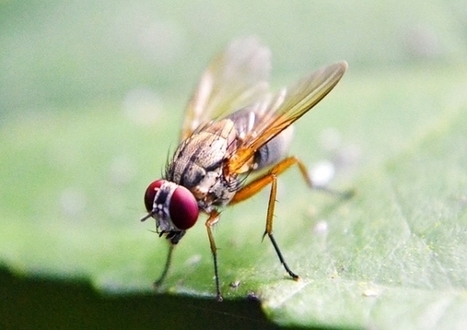"A fruit fly's sense of smell could potentially be used to sniff out bombs and drugs, according to a new study. Fruit flies (Drosophila melanogaster) can detect smells such as those from wine, which the insects are naturally attracted to because it smells like their favorite food, fermenting fruit. Now, new research shows that their keen "noses" could with just as much accuracy identify odors from illicit drugs and explosive substances as well."
Research and publish the best content.
Get Started for FREE
Sign up with Facebook Sign up with X
I don't have a Facebook or a X account
Already have an account: Login
 Your new post is loading... Your new post is loading...
 Your new post is loading... Your new post is loading...
|
|















mosquitas volando